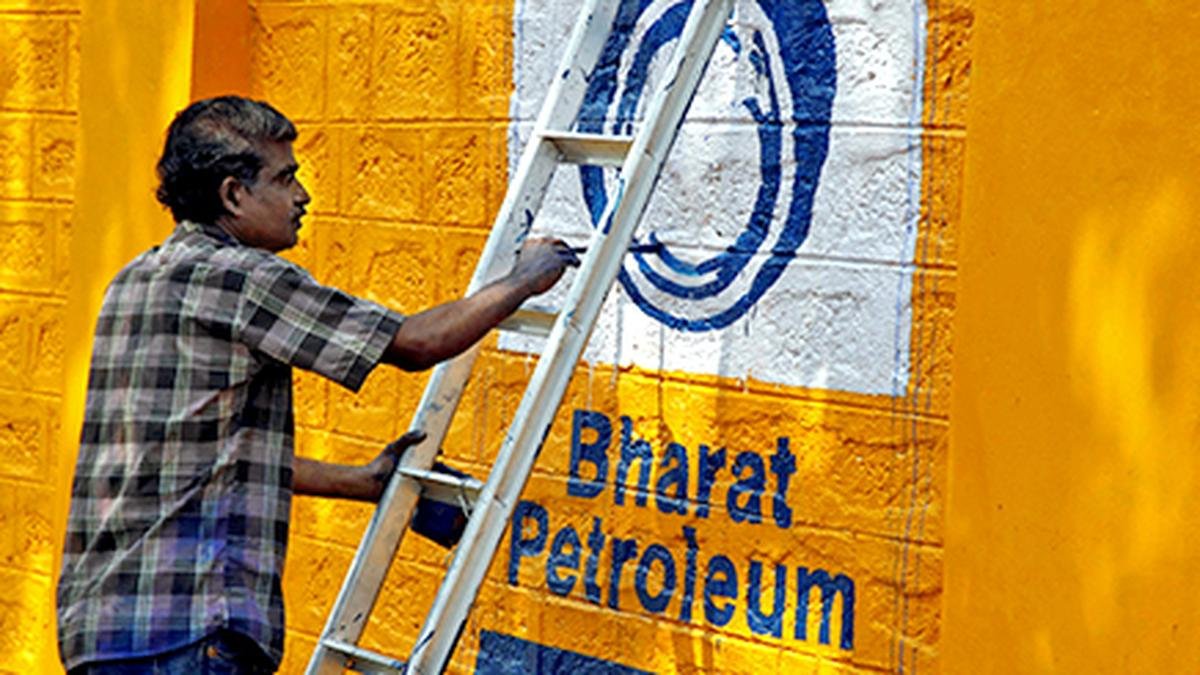
IOC, BPCL see 255% hike in payouts to Centre, benefiting from 65% crash in crude rates.
| Photo Credit: REUTERS
Over the last five years, the Union government has nearly doubled the dividends it has received from public sector companies to ₹74,000 crore, with an analysis by The Hindu showing it relies heavily on a few oil, gas, and coal companies for a large chunk of these dividends.
The analysis of company-wise dividend data from the Department of Investment and Public Asset Management (DIPAM) for the last five years shows that five fuel-related PSUs accounted for 42% of the total dividends the government has collected since the financial year 2020-21. The analysis excluded dividends from the Reserve Bank of India and the nationalised banks.
These companies — Coal India Ltd, Oil & Natural Gas Corporation (ONGC), Indian Oil Corporation (IOC), Bharat Petroleum Corporation (BPCL), and Gail (India) — contributed ₹1.27 lakh crore, or 42.3% of the total ₹3 lakh crore dividends the Centre received from non-banking PSUs between 2020-21 and 2024-25.
Minimal cut in petrol prices
The data also shows that the two directly-owned public sector oil marketing companies (OMCs) — IOC and BPCL — together saw a 255% increase in their dividend payouts to the government since 2022-23 and a 65% decrease in oil prices. However, they only passed on a 2% decrease in petrol prices to the public.
The third public sector OMC, Hindustan Petroleum, is owned by ONGC, and not directly by the government.
The total dividends from non-banking PSUs have also grown consistently since the COVID-19 pandemic. The government collected ₹39,558 crore as dividends from these companies in 2020-21, which almost doubled to ₹74,017 crore by 2024-25.
High dividends offset slow disinvestment
According to sources in the government, this is due to a “calibrated” approach to balance revenues from disinvestments and dividends.
“The government’s disinvestment policy announced during the pandemic is still very much in place, but it is not progressing as fast as it was initially hoped,” the official told The Hindu. “At the same time, many PSUs are turning profitable and so the government is maximising the dividends it can earn from them.”
The disinvestment policy, officially called the Public Sector Enterprises Policy, stated that the government would maintain a minimum presence in strategic sectors and would exit from all non-strategic ones. It was first announced as a part of the government’s COVID-19 Atma Nirbhar Bharat package in May 2020.
However, since then, enhancing dividends has also become a part of official policy.
Mandatory minimum dividends
An office memorandum sent out by DIPAM in November 2024 to all departments of the government and the managing directors of all PSUs laid out new rules for how much dividends these companies must pay their shareholders, the largest of which is the government of India.
According to the new rules, every Central PSU must pay a minimum annual dividend of 30% of its Profit After Tax (PAT) or 4% of its net worth, whichever is higher. In fact, the government has pushed these PSUs to pay dividends much higher than this mandatory amount.
“The minimum dividend as indicated in para 5.1 above is only a minimum benchmark,” the office memorandum said. “The CPSEs are advised to strive paying higher dividend taking into account relevant factors such as profitability, capex requirements with due leveraging, cash reserves and net worth.”
High payouts
IOC and BPCL saw their combined dividend payouts to the government increase 255% between 2022-23 and 2024-25, from ₹2,435 crore to ₹8,653 crore. Dividends of OMCs are paid from their profits, which themselves rise if the selling price of their fuel is higher than the cost of their inputs.
While the price of crude oil has fallen 65% — from $116 a barrel in June 2022 to $70 a barrel in July 2025 — the retail price of petrol has only been reduced by ₹1.95 per litre, or 2%, over this period.
Published – July 19, 2025 10:25 pm IST
